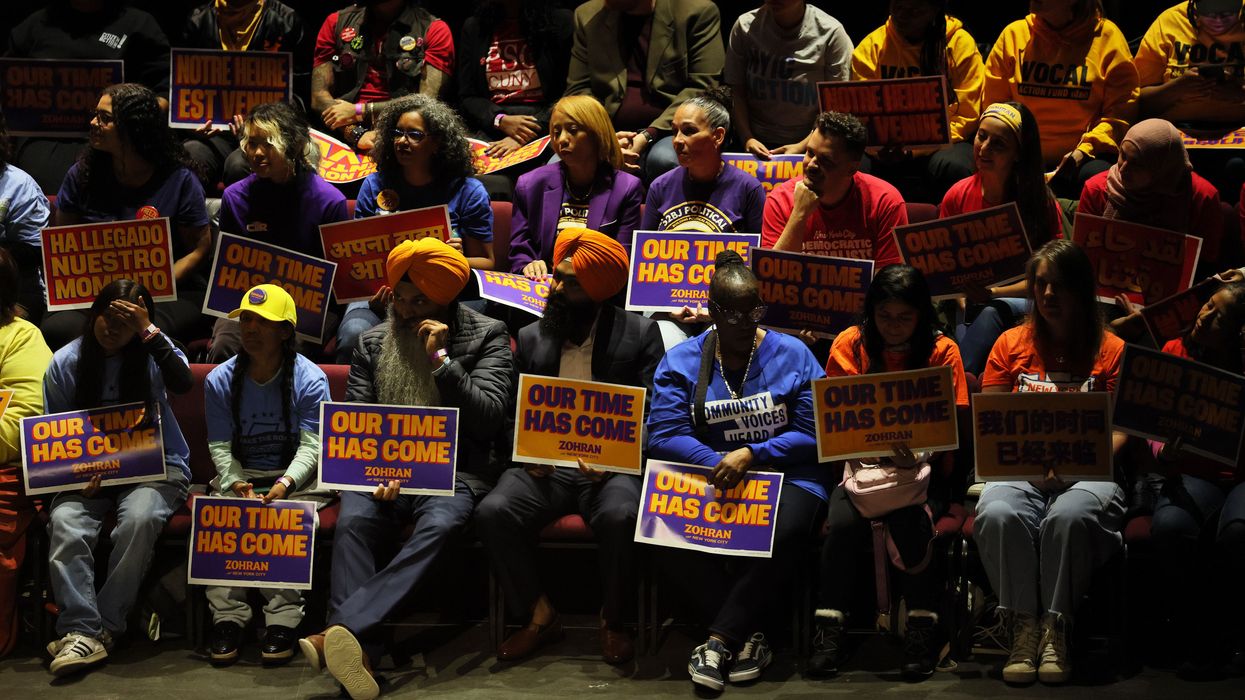AOC Rallies for Progressive Aftyn Behn in Surprisingly Close Race in Tennessee's Trump Country
Rep. Alexandria Ocasio-Cortez said the tight race shows that "people are increasingly recognizing that our fights are not left and right, but they are top and bottom. They are about all of us as working Americans."
Just over a year after President Donald Trump carried Tennessee's 7th District by more than 20 points, US Rep. Alexandria Ocasio-Cortez said Monday night that the final polls in the district's special election race between a Trump ally and a progressive state lawmaker are "a testament to how the American people are feeling in this moment."
Ocasio-Cortez (D-NY) was speaking at a virtual get-out-the-vote rally for state Rep. Aftyn Behn (D-51), who is facing GOP candidate Matt Van Epps in the district in Tuesday's special election. GOP Rep. Mark Green stepped down earlier this year for a private sector job after winning by 21 percentage points last year.
The electoral history of the district would suggest that Republicans could expect to easily win Tuesday's election, but with Van Epps ahead by just one or two percentage points in recent polling, Trump, House Speaker Mike Johnson (R-La.), and other Republicans are signaling fears that Behn could pull off an upset.
The president attacked Behn in a social media post Monday, warning that only Van Epps "cherishes Christianity and Country Music."
Like other progressive candidates in this year's elections, Behn has focused heavily on the need to make life more affordable for residents in the district, which was gerrymandered by state Republicans in 2022. The GOP eliminated a Democratic district in Nashville and its voters were added to three Republican districts, but Behn has worked to mobilize voters in predominantly Black areas that were added to the 7th District and told canvassers Monday evening that the redistricting scheme "backfired" on the Republicans.
AFTYN: “Clearly I’m living rent-free in President Trump’s mind.”
JUST NOW IN FRANKLIN — Rep. @aftynfortn Behn gave a pep talk to a group of fired up canvassers on the eve of an unexpectedly tight #TN7 special election.
(And a group hug) pic.twitter.com/1e0sNmNHEd
— The Tennessee Holler (@TheTNHoller) December 1, 2025
Behn has focused on high prices during the campaign, attacking Trump's tariff policies and decrying the One Big Beautiful Bill Act's cuts to Medicaid and nutrition assistance—calling the law the "Big Bullshit Bill."
"This is a wake-up call," she said after the law passed in July. "If we don't bring change to Congress, the billionaires and bought-out politicians will continue to rig the system against us."
As a state lawmaker, Behn proposed the Homes, Not Hedge Funds bill to stop private equity firms from buying up neighborhoods and advocated "for fair funding for rural communities" with her Rural Prosperity Act.
She's also spoken out and organized on the ground against Trump's mass deportation operation, which she's called a "flagrant abuse of power and state-sanctioned violence."
At the virtual rally on Monday night, Ocasio-Cortez said Behn's decision to take on a Trump-backed opponent in a heavily Republican district "takes a special kind of guts."
"That kind of guts is what we need more of in this country," she said. "A kind of person that says, 'We're not gonna do something because it's easy, we're gonna do it because it's the right thing to do.' And she is leading by putting herself on the line and raising her hand up first to say, 'I am going to fight for my neighbors no matter the odds.'"
🔥 WATCH — @AOC: “Tennessee is ready to elect @aftynfortn Behn. Miracles can happen… to run in an R+22 seat takes a very special kind of person with a very special kind of guts. That the race is so tight is a testament to how the 🇺🇸 people are feeling in this moment.” #TN7 pic.twitter.com/2QKr6EQUMI
— The Tennessee Holler (@TheTNHoller) December 2, 2025
Ocasio-Cortez added that the close race shows "people are increasingly recognizing that our fights are not left and right, but they are top and bottom. They are about all of us as working Americans and working-class people that are standing up against the injustices and the greed of our healthcare system, of our low wages."
Van Epps has sought to attack Behn for speaking out for the rights of immigrants, telling voters at a rally with the president, "The only way to stop crazy is to vote against crazy."
John Geer, a political scientist at Vanderbilt University, told the Washington Post that the fact that a Democratic candidate is being targeted so heavily by her Republican opponent in the 7th District and attracting the attention of the president shows the GOP is "worried."
“It’s interesting that Van Epps isn’t in a strong enough position just to ignore her,” said Geer.
Behn suggested that even if Van Epps ekes out a win in the close race, the competitive election has offered the latest proof of deep dissatisfaction with Trump's agenda.
“If we get close,” she told the Post, it will be due to the “affordability crisis that we are experiencing in Tennessee and the fact that the federal administration has not delivered an economic agenda to address the needs of working people in the state.”


